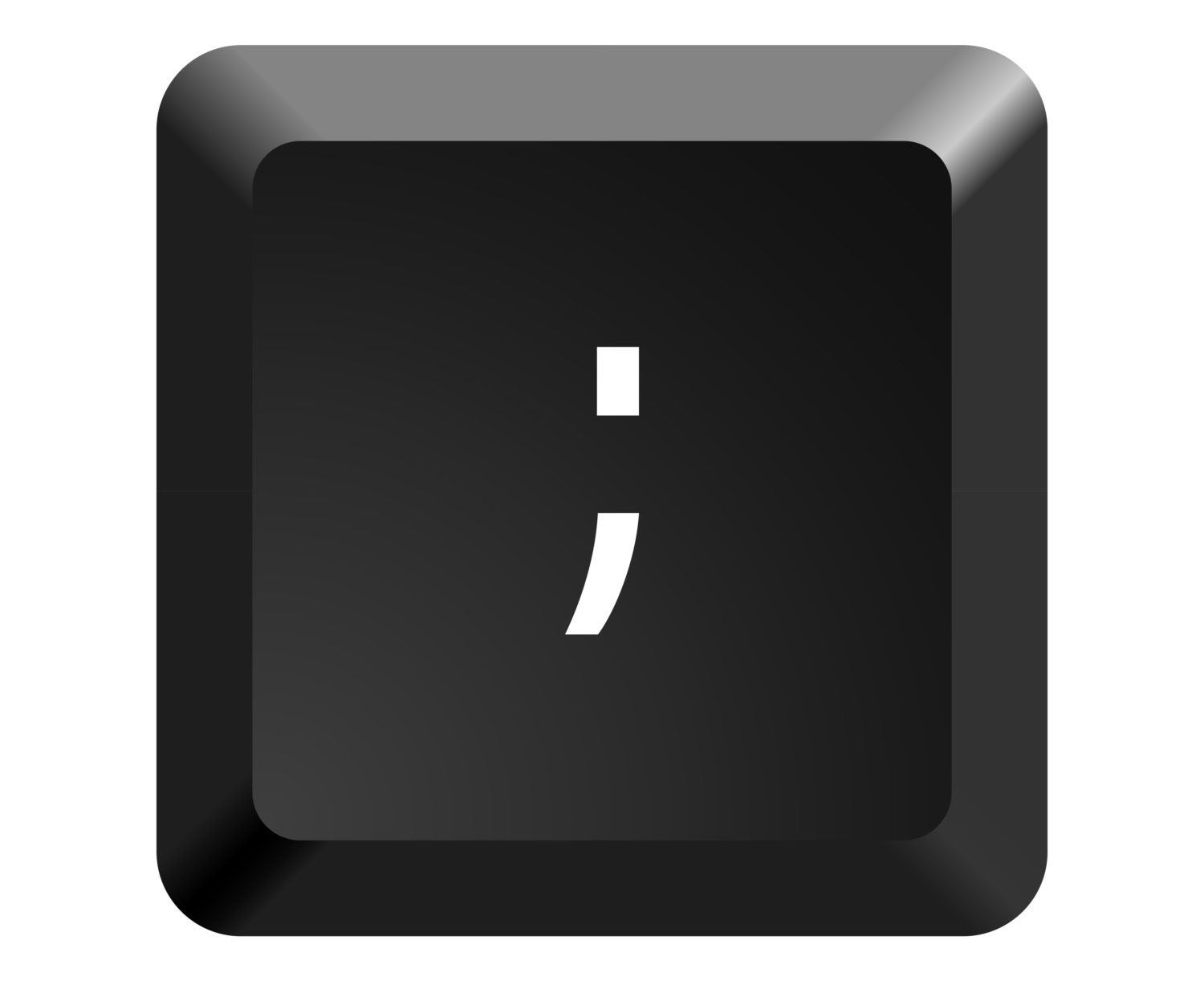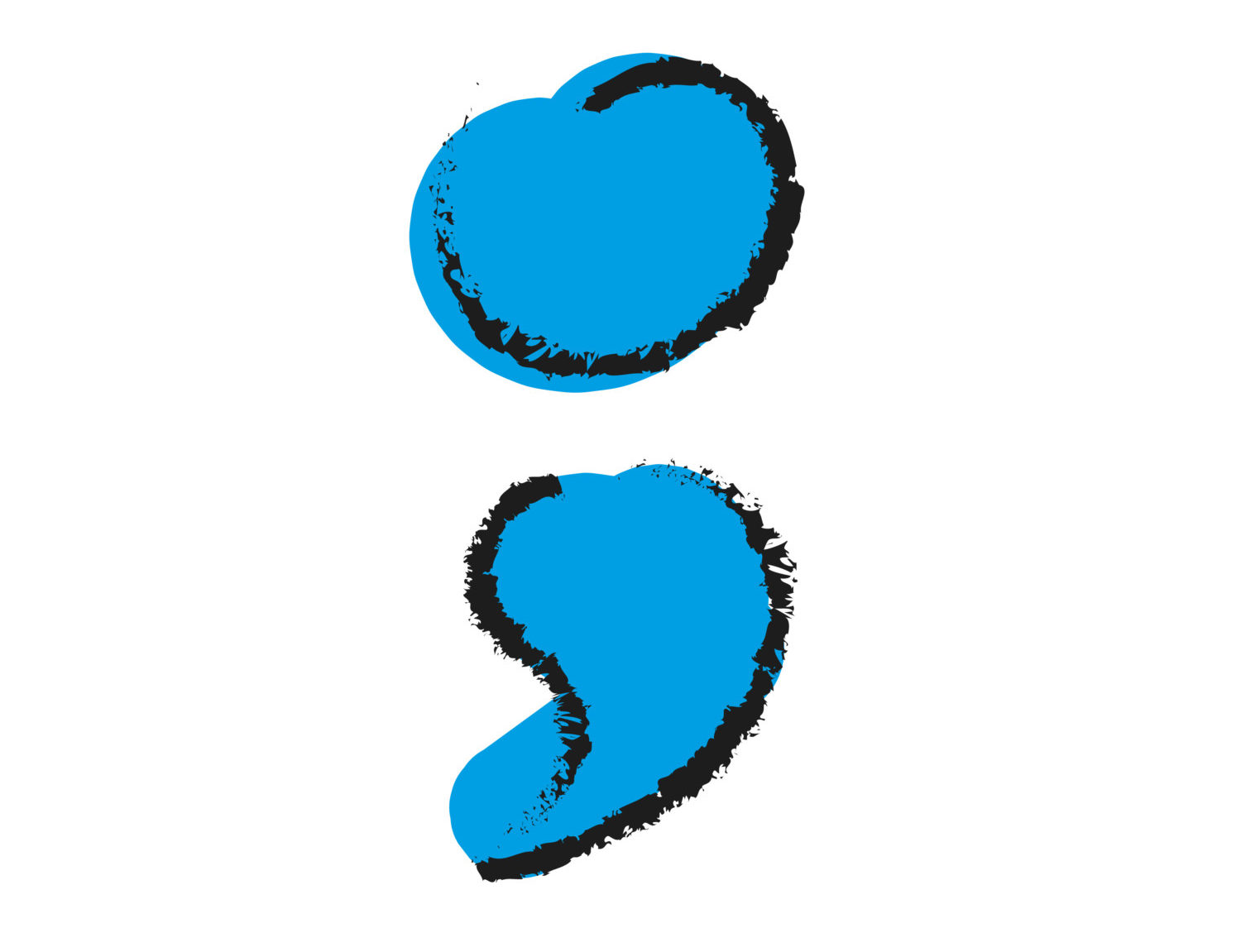The products and services mentioned below were selected independent of sales and advertising. However, Simplemost may receive a small commission from the purchase of any products or services through an affiliate link to the retailer's website.
Let’s talk about a subject that people can get a bit judgemental about. No, it’s not politics; it’s grammar.
Hold on! Don’t roll your eyes or make a mad dash for the door. As a former English teacher, I know how many people hate grammar. It’s stuffy rules about a language that is full of contradictions and words that sound the same but are spelled differently — their, they’re and there, anyone?
One punctuation mark that gives even good writers trouble is the semicolon. This blend of a comma and a period sits on the right side of the “L” on our computer keyboards, almost mocking us and daring us to use it. But the semicolon often gets overlooked because using it correctly seems too complicated. Today, we squash that myth!
What Is The Semicolon’s Purpose?
We have a semicolon in our collection of punctuation marks for a reason; primarily, it acts as an extended pause between two complete ideas that are usually connected in some way.
Think of the semicolon as more powerful than the comma and having a little less strength than a period. There’s a reason why the semicolon uses both of those symbols to create a brand new one.

We typically use semicolons between two complete thoughts (known as independent clauses by grammar nerds, because they can stand on their own with a subject and verb). As we read, a period indicates a full stop between those thoughts.
A comma, on the other hand, helps our brain take a brief pause as we read through a single sentence. It can set apart dependent clauses (thoughts that are not complete because they don’t have a subject and a verb) used as descriptions and asides. The comma can even combine items into a list. But it’s not right for combining independent clauses without a coordinating conjunction.
The semicolon is like the bridge in between the comma and the period. When used correctly, it’s a handy little symbol!

How To Use The Semicolon
Now that the whys of the semicolon are out of the way, let’s look at how to use it correctly. There are two primary ways we use the semicolon in writing.
Use The Semicolon To Bridge Related Independent Clauses
Remember that the independent clause is just a complete thought with a subject and a verb (action word). Here are two examples of independent clauses:
- I love going to the beach. The waves help me to relax.
Yes, we can use a period between these statements. It’s grammatically correct.
However, they both talk about the same topic and the second clause is simply an extension of the first one. So, use a semicolon to bridge them together.
- I love going to the beach; the waves help me to relax.
Notice how “the” doesn’t need to be capitalized now? It has become part of one sentence with the semicolon, so drop that capital letter.
Remember: use the semicolon to only connect two related ideas. It is not meant to be a blanket substitute for the period.
You can also use a semicolon to replace a comma and a conjunction (and, or, but, because, etc.) when they are used in between two independent clauses like this:
- BEFORE: I saw two dogs walking down the street, and they had on blue leashes.
- AFTER: I saw two dogs walking down the street; they had on blue leashes.
When you use the semicolon, drop the comma and the conjunction. The semicolon brings it all together!
Use The Semicolon In A Serial List
When you write a list that includes multiple commas, such as one with cities and states, the semicolon is a lifesaver to keep all the items straight. Here’s an example:
- Sally wrote down her travel itinerary, which included the following cities: Toronto, Canada; London, England; Madrid, Spain; Paris, France; and Cairo, Egypt.
The semicolon keeps all those places (and their commas) neatly organized and easy to read.
With these easy tips, you’ll be a savvy semicolon user and impress the grammar nerds in your life with your newfound expertise.
This story originally appeared on Simplemost. Checkout Simplemost for additional stories.


